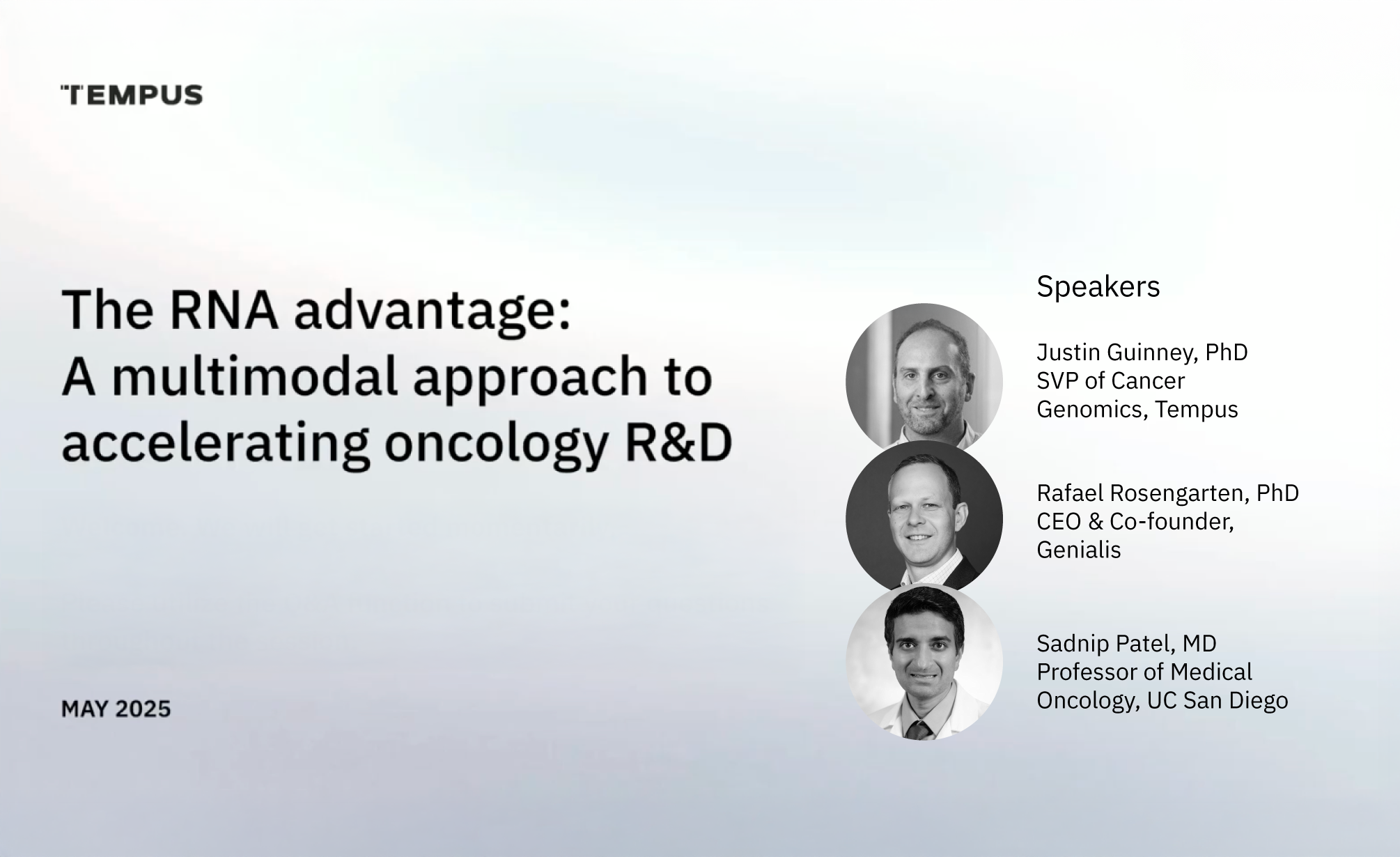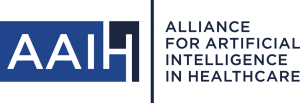At the end of May, Genialis CEO Rafael Rosengarten, PhD, joined a live webinar hosted by Tempus titled “The RNA Advantage: A Multimodal Approach to Accelerating Oncology R&D.”
He was joined by moderator Justin Guinney, PhD, SVP of Cancer Genomics at Tempus, and Sandip Patel, MD, Professor of Medical Oncology at UC San Diego.
The panel explored how RNA (and transcriptomic data more broadly) is driving innovation in oncology, both in drug development and clinical care.
Key takeaways
RNA sequencing adds context
Unlike DNA sequencing alone, RNA reveals which genes are actually active — and how. This gives researchers a clearer picture of disease mechanisms and how tumors might respond to therapy.
Multimodal data + AI = better predictions
Integrating RNA with other molecular data and AI models is powering what the panel called “Precision Medicine 2.0,” with stronger predictive insights for both clinical trials and real-world care.
Transcriptomics is essential for companion diagnostics
RNA data helps uncover and validate new targets, accelerating the path from biomarker research to patient impact.
Real-world example: Genialis™ krasID
During the session, Rafael shared results from Genialis™ krasID, our RNA-based biomarker designed to predict patient response to KRAS inhibitors.
He presented a Kaplan-Meier curve showing predicted benefit to sotorasib in a real-world NSCLC cohort.
Genialis krasID doesn’t just look at KRAS mutations; it also integrates RNA signals from the tumor microenvironment using machine learning. The result? >94% predictive accuracy in preclinical models and >80% in real-world patients.
That’s the RNA advantage in action.
Want to learn more about krasID or how RNA can move your pipeline forward?
Let’s talk: biomarkers@genialis.com

